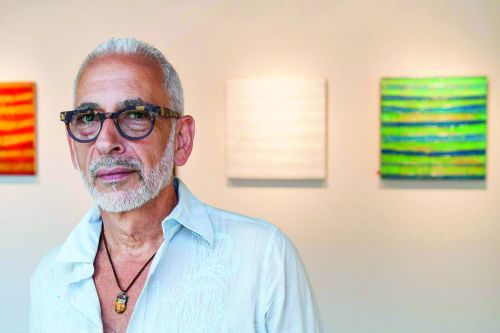Ask artists about their inspiration or process and you could be a captive audience for some time. But ask about finances and you are likely to be politely shut down.
With the proposal to eliminate funding for the National Endowment for the Arts, maybe we artists need to open up about money and our economic role in the community.
Artists have been told that talk of creativity and finances don’t mix. But the myth of the starving artists who can only make their best work under difficult circumstances has gone on way too long. I have rebelled against that concept since before I even realized art would be my career.
Over the 30-plus years I have made a living as a visual artist, I have made more and arguably better work when I have been able to concentrate on my creativity without having to worry about how to pay my bills. Of course we continue to create no matter the circumstances, but artists generally have the same needs and want the same comforts as anyone else.
President Donald Trump’s budget is just the latest of many political maneuvers, including Reagan administration proposals to slash funding by half, where the arts become the symbolic pawn. It can happen when any sort of governing body feels the need to tighten its belt. Generally, the belt-tightening for the arts would not produce fiscally significant results.
Why are the arts so frequently targeted? Although I’m sure there are multiple reasons, we in the creative fields get so caught up in our own awareness of art’s emotional and unquantifiable benefits that we don’t articulate the financial benefits the general public reaps from them as a business. We are too cautious to say, “BTW, when we do make money, most of that money goes back into our communities.”
I remember a while back writing to a state senator who wanted to do away with the one-half of 1 percent from construction costs allocated to art because ”that money should go to working families in Washington.” Artists don’t work or have families to feed? There is obviously a disconnect that needs mending.
Like most artists, I have never received a grant directly from the National Endowment for the Arts. I have benefited from creating public works that likely would have never happened without NEA grants made to our state’s arts commission, thanks to a partnership that has lasted almost 50 years. In fiscal year 2016, our state received $790,300 from the NEA. Due to a stipulated 1-on-1 match from the state’s general fund, that money is doubled and, in turn, this partnership becomes a catalyst for leveraging up to another $9 from private and public funds for every NEA dollar.
I am currently working a project funded — with a budget of just under $47,000 (including tax) — by the state arts commission, which receives close to a third of its budget from the NEA. I’d like to give people a clearer picture of the process and expenses.
For several years I have been on the state’s roster of public artists, for which artists must show examples of past works — completed on time and on budget. From there, a committee, from the technical college where the work will go, selected me based on seeing previous works of mine and other artists. Several meetings and site visits are usually required. My process encompasses asking a lot of questions and doing research about the history of the institution and the people it serves, to come up with a strong concept that is both artistic and meaningful to its intended audience. This is done while simultaneously getting bids for fabrication and keeping costs in mind — just in case it is a go.

